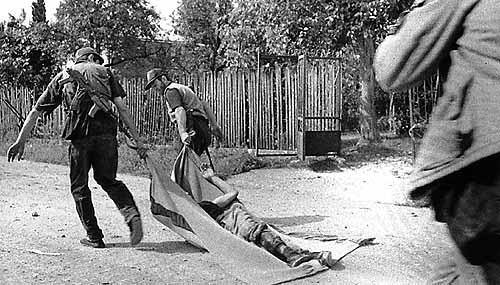Q: When conducting a survey, how do you select a sample that is representative of an entire population?
A: In order for a sample to be representative of an entire population, every member of the population must have some chance of being randomly selected. In reality, there are segments of a population that can and cannot be interviewed. Therefore, we need to understand the nature of the population for which each survey is representative.
Take the Caucasus Barometer (CB) as an example. First, we randomly select voting precincts from a list of all voting precincts that contain members of the population. Thus, every precinct has a chance of being selected.

The beginning of a long list of voting precincts from which precincts are randomly selected for sampling.
Second, CRRC randomly selects households within each of the selected voting precincts. Then, interviewers conduct a “random walk” in order to randomly select households. This random walk gives each household a chance of being selected for an interview.

This CRRC interviewer has a map of households in a selected voting precinct to assist her in her “random walk” household selection. Photo by Paul Stephens.
Third, an adult household member is randomly selected for an interview within each randomly selected household. Interviewers make a list of all adult (18 years and older) household members and randomly select one of those members for an interview. The interviewer uses a kind of random number table called a “Kish table” to randomly select one of those household members to interview. Using these three steps above, each member of the population has a chance of being selected for an interview.

This household consists of a 25 year old man, a 61 year old woman and a 24 year old woman. The 25 year old man has been randomly selected for interview.
As in any country, logistical realities mean that some segments of the country’s adult population do not have a chance of being sampled. For example, some voting precincts could not be sampled even if they were randomly selected (e.g., special voting precincts for military personnel). Also, some people might not be able to be surveyed even if they were randomly selected. This includes people who do not speak the language in which the survey is conducted or those who are not physically able to be interviewed. Other excluded groups of the population include people in prisons or hospitals. The impact of losing some of these groups is relatively little since such groups are usually so small that they are within the margin of error.
By understanding which groups of the population can and cannot be included in the sample, CRRC takes all of the steps above to ensure that samples are representative of the entire population. In addition, CRRC prints questionnaires in minority languages and recruits interviewers who speak those languages so that the CB can be described as representative of the adult population of the Republic of Georgia.












